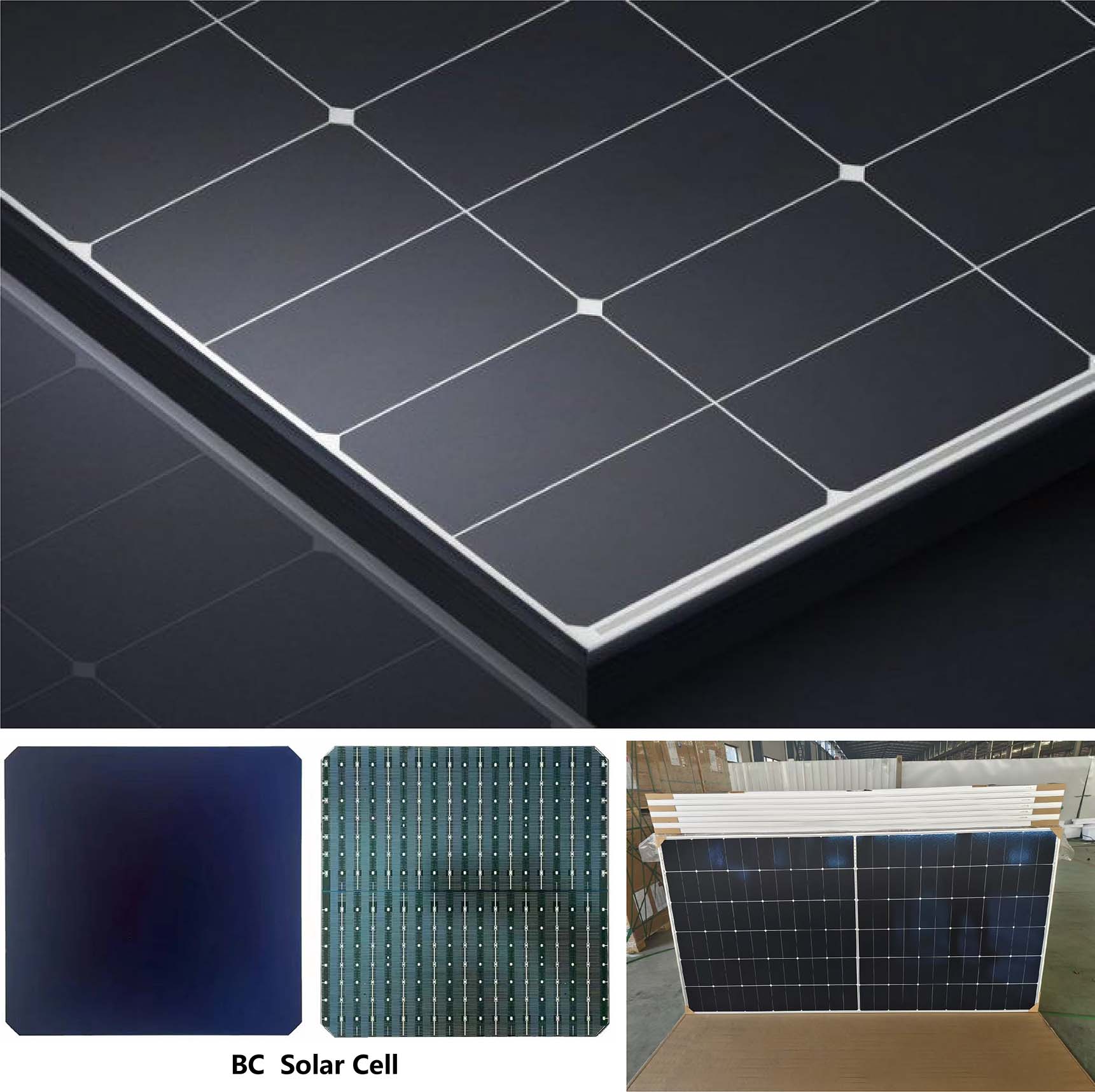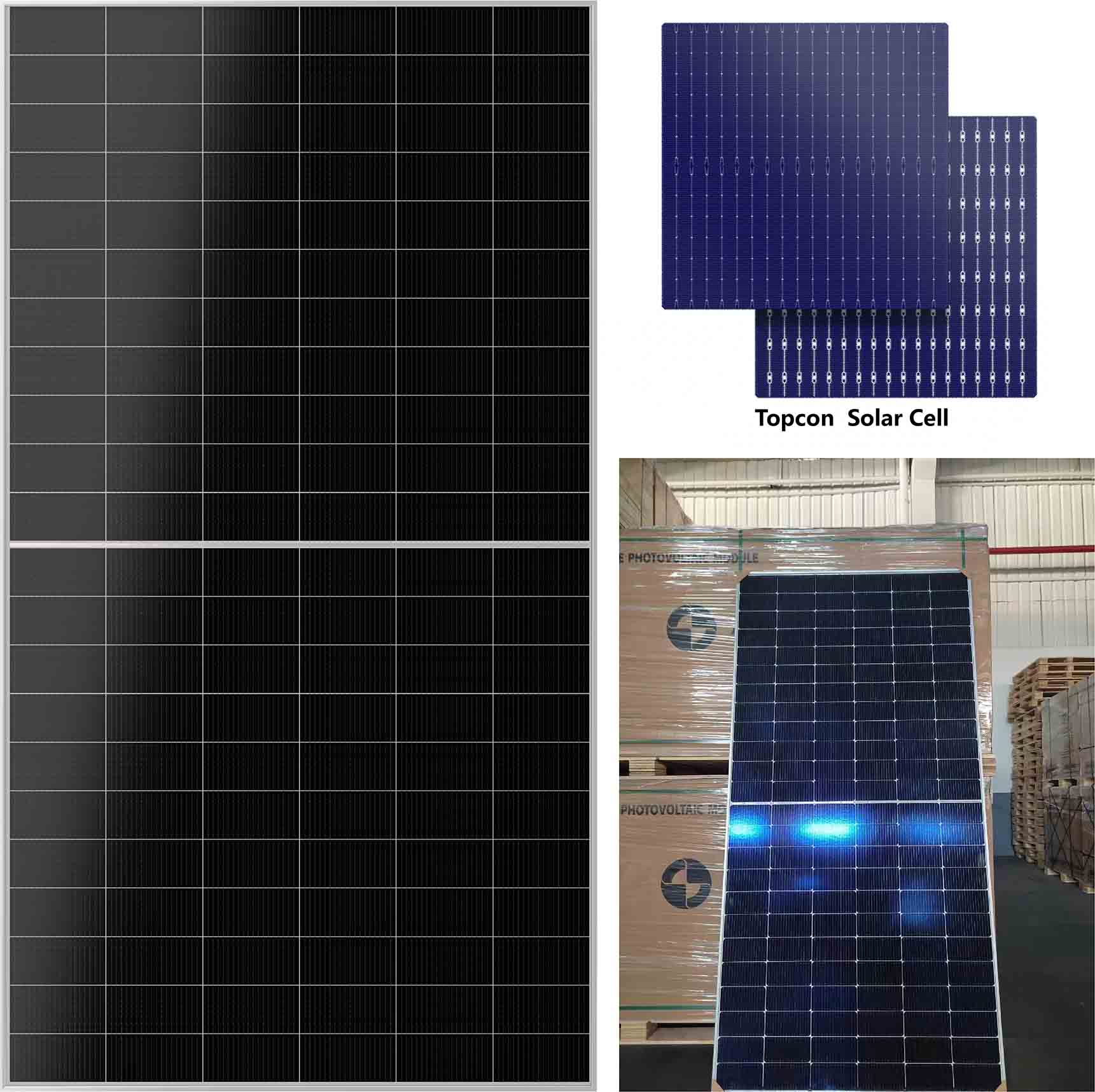Nell'ondata globale di ricerca della neutralità carbonica, la tecnologia dei pannelli solari sta subendo cambiamenti radicali. Due tecnologie all'avanguardia nel settore fotovoltaico, le celle BC (celle a contatto posteriore) e le celle TOPCon (celle a contatto con passivazione a tunnel di ossido), stanno accelerando l'ammodernamento del settore fotovoltaico con una maggiore efficienza di conversione e vantaggi distintivi.
Nucleo tecnico: l'innovazione strutturale determina i limiti delle prestazioni
Celle BC: "design senza ostacoli" con estrema efficienza
Le celle BC utilizzano la tecnologia degli elettrodi a contatto posteriore per spostare tutte le linee della griglia metallica sul retro della cella, senza alcuna ostruzione sulla parte anteriore. Questo design massimizza l'area di assorbimento della luce, con un'efficienza in laboratorio superiore al 26% e un'efficienza di produzione di massa stabile al 24%-25%. I suoi vantaggi iconici includono:
Maggiore potenza in uscita: nella stessa area, la produzione di energia dei componenti BC aumenta del 5%-10%, il che è particolarmente adatto a scenari con vincoli di spazio, come i pannelli fotovoltaici sui tetti.
Vantaggio estetico: l'aspetto completamente nero si integra perfettamente con l'edificio, rendendolo la soluzione preferita per il BIPV (sistema fotovoltaico integrato nell'edificio).

TOPCon cellule: un maestro nel bilanciare efficienza e rapporto costo-efficacia
Basato sulla tradizionale batteria PERC, TOPCon riduce significativamente la ricombinazione dei portatori grazie alla struttura di contatto passivata di uno strato ultrasottile di ossido di silicio e di uno strato di polisilicio drogato. L'efficienza di produzione in serie ha raggiunto il 24%-25,5% e presenta notevoli vantaggi in termini di costi:
Compatibilità con la linea di produzione: può essere aggiornato sulla linea di produzione PERC esistente e i costi di trasformazione dell'attrezzatura si riducono del 30%-50%.
Potenziale di assottigliamento: supporta wafer di silicio inferiori a 130μm, riducendo ulteriormente i costi dei materiali.

Struttura del mercato: opportunità e sfide nella differenziazione dei percorsi tecnici
Secondo il rapporto SPE Global 2024 Photovoltaic Technology Report, TOPCon ha occupato il 70% della nuova capacità produttiva grazie alla sua elevata economicità, diventando la scelta principale per le centrali elettriche a terra. Le batterie BC sono attualmente concentrate sul mercato distribuito di fascia alta a causa della complessità del processo e dei costi elevati, ma la loro quota cresce a un tasso del 15% annuo.
Dinamiche chiave del mercato:
Esplosione della capacità di TOPCon: nel 2024, la capacità globale di TOPCon supererà i 500 GW e aziende leader come Longi e Jinko accelereranno la loro progettazione, determinando un calo significativo del costo per kilowattora.
Svolta tecnologica nella BC: SunPower e Longi collaborano per espandere la capacità produttiva dei moduli IBC, puntando ai mercati domestici europei e americani, con un margine di guadagno dell'8%-12%.
Orientato alle politiche: la direttiva UE sulle energie rinnovabili impone l'installazione di pannelli solari nei nuovi edifici. L'elevata efficienza e le caratteristiche estetiche della Columbia Britannica potrebbero essere i maggiori beneficiari dei dividendi politici.
Scenari applicativi: come scegliere la soluzione migliore?
Tetti residenziali, industriali e commerciali: dare priorità ai componenti delle batterie BC per ottenere rendimenti più elevati con una superficie limitata, migliorando al contempo il valore estetico dell'edificio.
Grandi centrali elettriche terrestri: TOPCon è diventata una scelta economica per applicazioni su larga scala grazie ai suoi bassi costi dell'elettricità e alle sue rapide capacità di espansione.
Progetti in ambienti estremi: le batterie BC presentano un degrado delle prestazioni inferiore nelle aree ad alta temperatura grazie al loro basso coefficiente di temperatura (-0,29%/℃) e sono adatti a mercati come il Medio Oriente e l'Australia.
Tendenze future: competizione efficiente e integrazione tecnologica
Il settore fotovoltaico si sta muovendo verso un'era di efficienza del "26%+" e due importanti percorsi tecnici continuano a evolversi:
Direzione dell'aggiornamento di TOPCon: attraverso l'ottimizzazione dei processi di metallizzazione e Poly-Si bifacciale, si prevede che l'efficienza della produzione di massa supererà il 26% nel 2025.
Innovazione tecnologica BC: il trasferimento laser e i processi senza maschera riducono i costi e l'efficienza di laboratorio della tecnologia HBC combinata con HJT (eterogiunzione) ha superato il 26,5%.
Conclusione: orientato alla tecnologia, basato sugli scenari
Che si tratti della batteria BC che punta all'efficienza estrema o della tecnologia TOPCon che vince in termini di economicità, ciò indica che i pannelli solari sono entrati in un'era di elevata efficienza e perfezionamento. Le aziende devono scegliere soluzioni tecniche appropriate in base ai requisiti di progetto, al budget e ai benefici a lungo termine. Con il progresso tecnologico e il rilascio di effetti di scala, la "competizione win-win" tra BC e TOPCon continuerà a promuovere il settore fotovoltaico per ridurre i costi e aumentare l'efficienza, accelerando il processo di trasformazione energetica globale.